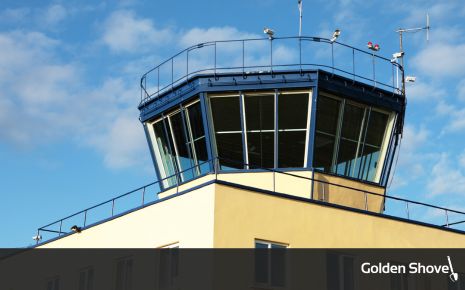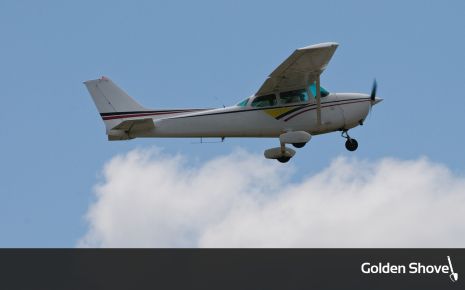Flying High: Local Airports Are Engines of Economic Growth

2 Sep 2024
News, Aerospace & Aviation
The airport in your community provides valuable services that are often overlooked. In addition to providing a runway, fuel, and a building, airports can be a hub of economic activity. It is an economic asset with the potential to produce revenue and services for the community.
General Aviation Facts
- Generates over $150 billion annually
- Supports over 8 million jobs
Our latest whitepaper, “From Runways to Revenue: Economic Benefits of Your Local Airport,” explores the significance of aviation on local economies and how to leverage it for yours.
Local Airports Offer Multifaceted Services & Create Economic Opportunities
Cities like Gallup, NM, understand that local air travel is critical to their economic health. Without access to the national air transportation system, the community would be cut off from travel and the supply chain. Gallup makes the case for its local airport on its website:
“Direct service to a medium or large airline hub can provide one-stop access to hundreds of additional destinations around the globe. As our economy grows and smaller communities struggle to compete in the global marketplace, airports have become a vital link to survival.”
Local Airports Support Business Retention & Expansion
In some instances, the connectivity provided by local airports is necessary for business attraction and retention. The Cleveland Regional Jetport in Tennessee is the perfect example. Built in 2013, its 6,200-foot runway and 8,000-square-foot terminal building is heavily utilized by corporate executives from companies like Coca-Cola, Whirlpool, and Amazon.
Medical Companies Can Be Based at the Airport
Beyond providing connectivity, an airport’s economic impact increases as the activity at the airport diversifies. For example, airports can offer communities a variety of business services, including transportation, medical, surveying, flight instruction, aircraft maintenance, recreation, humanitarian missions, agricultural services, and more. For example, the South Alabama Regional Airport Authority expanded airport business activity by leasing space to Medical Air Rescue Company. Medical Air Rescue Company is based in Rapid City, South Dakota, and it provides a complete air ambulance transportation process that is like that of a flying intensive care unit. The company’s presence at the airport increases its overall economic impact while creating awareness of what’s possible at the site.
Agriculture Aviation Is a Longstanding Economic Driver
Agriculture aviation, or "ag aviation," is crucial in modern agriculture and pest control in the United States. This specialized industry utilizes aircraft to apply pesticides, fertilizers, and seeds to agricultural fields. The National Agricultural Aviation Association reports that there are approximately 1,560 aerial application businesses and around 3,400 ag pilots in the U.S. Recently, unmanned aerial vehicles (UAVs) or drones have become increasingly prominent in agriculture aviation, offering innovative solutions that complement traditional methods. These drones provide a cost-effective, efficient, and environmentally friendly crop management and monitoring approach.
A recent FAA ruling has paved the way for the use of drone swarms in agricultural spraying, offering significant cost savings for agricultural businesses. Drones provide precise application on crops, reducing soil compaction, fuel costs, and maintenance compared to traditional tractors. This technological advancement marks a significant leap forward in the efficiency and precision of agricultural aviation.
Private Charter Services Are Redefining Air Travel
In many airports, private charter services offer a personalized and flexible alternative to commercial airline travel. These services cater primarily to business travelers, high-net-worth individuals, and groups seeking convenience, privacy, and efficiency. Private charters provide tailored, efficient travel options that meet a wide range of needs and preferences. With ongoing technological innovations and a growing focus on sustainability and accessibility, private charters are evolving. They present a viable alternative to commercial air travel for those willing to pay a premium for the benefits of privacy, convenience, and personalized service.
General aviation, driven by passion and community, encompasses a broad spectrum of activities from recreational flying to critical agricultural applications. The sector thrives on the enthusiasm of individuals and the support of flight schools that nurture new aviators. Innovations in technology, particularly in agriculture aviation and private charters, continue to push the boundaries of what's possible, ensuring that general aviation remains a dynamic and integral part of the aviation landscape.
Learn More About the Economic Impact of Local Airports
In our free whitepaper, “From Runways to Revenue: Economic Benefits of Your Local Airport,” we provide examples of small airports making a big impact. For example, most people have never heard of Maryland’s Lee Airport. With a 2,500-foot runway, this small, local airport is primarily used by two flight schools and by aviation enthusiasts who fly as a hobby. Yet, 41 people are employed at the airport, and it’s a hub of activity for people seeking their pilot’s license. Statewide, if you eliminate the economic impact of Maryland’s only large commercial airport, BWI, there are still 9,929 jobs and $1.1 billion in economic activity created by the state’s airports. Small airports make a significant contribution to local economies and can for yours as well. Download our whitepaper to discover how.
More Topics





